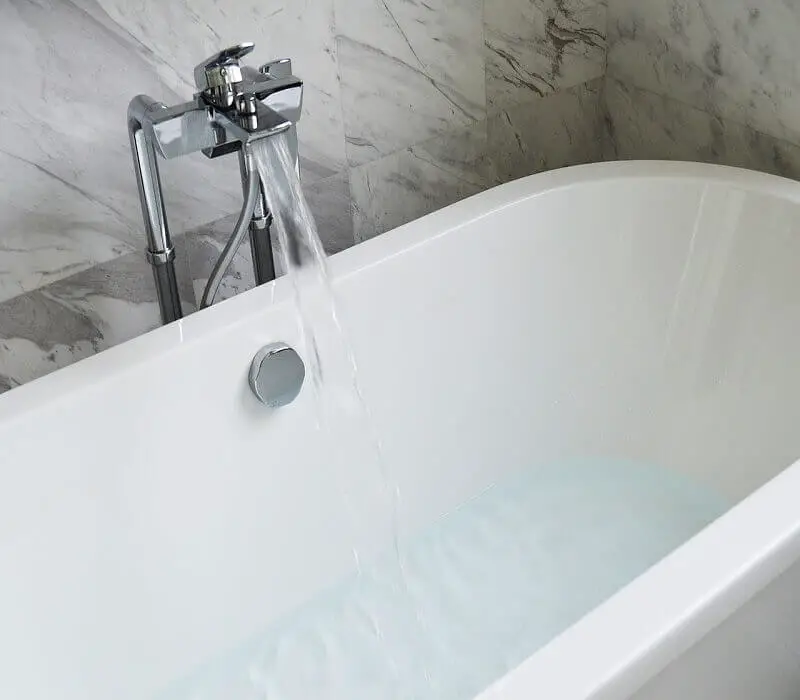
Most people dedicate a significant amount of time daily to cleaning their toilets. After all, it’s an essential chore that allows us to get rid of the awful smell, remove bacteria, and ensure a healthier environment. And that’s why many of us rely on chemicals such as Harpic to help us get the desired results with minimal effort. So now we will discuss how to remove harpic stains from toilet seat. However, since Harpic is intended for toilet bowls, using it on the wrong surface, such as your toilet seat, can result in an unsightly stain.
A stain caused by Harpic can be pretty noticeable, especially on a white toilet seat. It can also make your bathroom look unhygienic and detract from its overall attractiveness. But don’t worry, I’m not here to scare you. In fact, I’ve put together a list of some fantastic techniques that can remove Harpic stains from a toilet seat easily.
The best part about these approaches is they require inexpensive products that you probably have already under your kitchen sink.
Table of Contents
How to Remove Harpic Stains from Toilet Seat Using DIY Techniques
Rubbing alcohol
Regardless of how awful the stain may look, rubbing alcohol can easily remove it. This chemical is very efficient in eliminating blotches, especially dye-based stains. All you need to do is fill a spray bottle with rubbing alcohol and spray the entire soiled area. Then, using a brush, scrub the spot until you restore your toilet seat’s original color.
If you don’t have a spray bottle on hand, you can alternatively soak a paper towel in rubbing alcohol and place it over the discolored spot. Then, using a brush, proceed the same way as you’d in the previous step.
Magic Eraser
Another quick and easy method is by using Magic Eraser. It’s practical, safe to use, and doesn’t take too much time to produce great results. Simply wet the eraser to activate its melamine foam, then scrub the discolored area. Continue scrubbing until you get rid of the Harpic’s dye.
As you can see, this one is relatively straightforward and doesn’t involve a combination of solutions. Cool right !
People Also Like This:
Bleach
If you have a white toilet seat, and you, unfortunately, didn’t get the desired results using the preceding approaches, then we recommend using bleach as your final resort. Bleach is a very effective agent against a wide variety of dyes, including those caused by Harpic.
The ideal ratio for removing Harpic stains from a toilet seat with bleach is by combining one tablespoon of bleach for every cup of water. Blend the solution well before applying it to the affected area.
Make sure not to spread bleach to other surrounding areas, though, since some surfaces might have an adverse reaction when they get in touch with this chemical.
Lastly, rinse your toilet seat and enjoy its attractiveness once again.
Remark: You can repeat the same technique if the initial application didn’t manage to get rid of the stain entirely.
Frequently Asked Questions
Do Bleach Stain Toilet Seats?
The short answer is yes. If the mixed amount of bleach and water isn’t respected, or if there’s a lack of proper rinsing after using this chemical, then you’re more likely to notice a yellow discoloration on your toilet seat.
What Pieces of Gear Should I Equip Before Using These Approaches?
I’m glad you asked. Bleach is a type of chemical that can be quite hazardous to your skin. Therefore, we highly recommend wearing rubber gloves before executing the aforementioned bleach technique.
Remark: In case you get exposed to bleach, you should wash the affected area of your body right away.
Why Did My Toilet Seat Develop Blue Stains?
Harpic or any other toilet bowl cleaner is often the one to blame for the blue stains on your toilet seat. These chemicals have a distinctive color simply to indicate their presence in your toilet bowl.
The purpose of the dye on these cleansers is to keep you from mixing them with other chemicals. Bear in mind that combining two different chemicals may sometimes result in a toxic combination that might harm the surface you clean or even your own health.
Conclusion
Our last piece of advice before we say our last word is to never forget to wash your toilet seat before using any of the approaches mentioned above. As stated earlier, the combinations of chemicals such as bleach with Harpic can result in the release of harmful chlorine gases.
Therefore, we recommend that you dedicate a few minutes of your precious time to properly rinse everything out before tackling the Harpic stains.
We hope the information provided above has helped you in removing the Harpic stain from your toilet seat. We will highly appreciate your feedback regarding these methods, so feel free to share with us your thoughts in the comment section below.
How do you get Harpic stains out of a toilet seat?
To remove Harpic stains from a toilet seat, use equal parts white vinegar and water or a commercial toilet cleaner, let it sit for several minutes, scrub gently, rinse with water, and dry with a cloth. Repeat or use a stronger cleaner if necessary, but follow instructions and safety precautions carefully.
Does Harpic damage toilet?
Harpic toilet cleaner should not damage the toilet when used according to the instructions. Avoid using it on surfaces not recommended, use the appropriate amount, and avoid mixing it with other cleaners to prevent harmful fumes. Contact the manufacturer’s customer support if you have any concerns.
What is the best way to remove urine stains from toilet seat?
The best way to remove urine stains from a toilet seat is to clean the affected area with a mixture of white vinegar and baking soda. Apply the solution to the stains and let it sit for several minutes, then scrub gently with a brush or cloth. Rinse the area with clean water and dry with a clean cloth. For stubborn stains, you may need to repeat the process or use a commercial cleaner specifically designed for removing urine stains.
Why did my toilet seat turn blue after cleaning?
Your toilet seat may turn blue after cleaning due to the reaction between certain cleaning agents and the material of the toilet seat. Some toilet bowl cleaners contain chemicals such as bleach or hydrochloric acid, which can cause a reaction with the plastic or paint on the toilet seat, resulting in a blue discoloration.
We're an affiliate
We hope you love the products we recommend! Just so you know, CleanyHome.com is a participant in the Amazon Services LLC Associates Program, an affiliate advertising program designed to provide a means for sites to earn advertising fees by linking to Amazon.com.


